December 13, 2004
e-Performance and Plug-ins
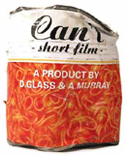
A Mediatised Performance Conference
e-Performance and Plug-ins: A Mediatised Performance Conference; December 1 and 2, 2005; The School of Media, Film & Theatre, University of New South Wales, Australia.
Introduction: The hybrid phenomena created by new media performance-makers traverse a range of academic disciplines and approaches from philosophical enquiry into the ontology of liveness to the very technical and logistical questions of performance in a mediatised environment under diverse conditions of actualisation.
Some performance theorists have questioned the notion of liveness by asking 'How is the liveness of the performance changed when it occurs within the spaces of technology?' Others have discussed the phenomenon of Internet use as 'performance on-line' and have used terms commonly found in new media discourses, such as 'posthuman', 'virtual bodies', 'embodiment' and 'telepresence'. Yet others draw upon Lacanian film theory in their analysis.
This symposium will address the range of these extant approaches and seek new discourses with which to talk about this emergent area of study. It is intended as a forum for cross- and multi-disciplinary investigations of issues around media/technology-based performance. Paralleling the diversity and range of artistic and theoretical approaches to media-based performance, conference contributors will present multi-modally, including live video interventions by speakers outside Australia, live performances, as well as presentations of scholarly papers and practice-led research.
Areas of enquiry: In developing their submissions, delegates are asked to address one or more of the following areas of enquiry:
» What terminology is appropriate to the discussion of mediatised performance? Is the traditional language of performance studies, terms such as 'dramaturgy' or 'ritual', helpful in discussing media/technology-based performance? Or are information-technology terms such as 'interface' and 'interactivity' more useful?
» What are the key challenges arising in collaborations between theorists from different disciplines when discussing live performance in a mediated matrix?
» What issues, for both critic and practitioner, lie at the nexus of theory and practice in digital performance?
» What are the epistemological differences between a virtual performance in a virtual venue (on the Internet and/or computer) and a new media 'live' performance in a theatre?
» Where exactly would a history of mediatised performance begin? What would that history cover, and what would it privilege? What is the future for mediatised performance?
Abstracts and proposals are invited in the following forms:
1. Scholarly Paper: A paper of 20 minutes duration, with time then allocated for questions and discussions (10 minutes). Papers should address an aspect of the conference's areas of enquiry as described above. Abstracts to be sent by 01 June 2005. (Response by 15 July 2005)
2. Presentation of Practice-Led Research: Artist/scholars are invited to submit proposals for a 20-minute theoretical discussion of their own art/performance works through documentation in relation to any of the conference's areas of enquiry. Abstracts to be sent by 01 June 2005. (Response by 15 July 2005)
3. Panel: Design, curate, and organise a panel which addresses any of the conference's areas of enquiry. Panel sessions will be two hours in duration and should include no more than four speakers in order to set a framework for discussion. Proposals including brief details of panel framework and speakers' contributions to be sent by 01 April 2005. (Response by 01 May 2005)
4. 'Live' performance: Proposals for a short 'live' media-based/intermedia performance (max. 20 minutes duration) may be submitted. Artists will be responsible for providing for the particular technical needs of their performances, while the conference organisers will provide a theatre venue with basic audio and visual equipment and Mac computers. The selected works will be showcased as an evening performance event. Proposals including technical requirements to be sent by 01 May 2005. (Response by 01 June 2005)
Please submit the following:
» An abstract (approx. 300 words) for Categories 1 and 2
» A proposal (approx. 800 words) for Categories 3 and 4 ß Your name, title, and professional affiliation
» A one-paragraph biography (no more than 100 words) for publication in the conference program
» An email contact address
» Technical requirements for your presentation (software/hardware)
Conference organisers:
Executive committee: George Kouvaros, Andrew Murphie, Ed Scheer
Advisory committee: John Golder, Su Goldfish, Clare Grant, Ross Harley, Moe Meyer
Enquires: Yuji Sone (Conference Coordinator) at y.sone @ unsw.edu.au
Dr Yuji Sone
Vice-Chancellor's Postdoctoral Fellow
School of Media, Film and Theatre
The University of New South Wales
Sydney 2052 Australia
Ph: +61 2 9385 4862
Fax: +61 2 9662 2335
Posted by jo at 09:30 AM | Comments (0) | TrackBack
December 06, 2004
navigating the narrative in space
Mary Flanagan will give the keynote at "Playing the Past: Nostalgia in Video Games and Electronic Literature" conference, to be held on March 18-19, 2005 at the University of Florida.
Flanagan's navigating the narrative in space: gender and spatiality in virtual worlds" is an important complement to Turkle's, Bruckman's, and Donath's writings on gender and technology...Flanagan is co-editing--with Austin Booth--the much expected "reskin" (Cambridge: MIT Press), which is forthcoming in 2005. Reskin follows the 2002 piece by the same editors "reload: rethinking women + cyberculture" (also MIT Press). The 2005 book focuses on how technology is being used to alter the physical body."
Posted by ana boa-ventura on net art review
Posted by jo at 03:45 PM | Comments (0) | TrackBack
November 09, 2004
performing art performing science

Call to Performance
TRANSNET Conference [Transdisciplinary Network for Performance and Technology] asks:
"How can a transdisciplinary perspective communicate new knowledge emerging at the intersection between disciplines?"
"How can this alter approaches to performance?"
Call for Proposals to the conference, June 16-18, 2005 at the School for the Contemporary Arts at Simon Fraser University, Vancouver, Canada.
Posted by michelle at 04:32 PM | Comments (0) | TrackBack
INTERACTIVE FUTURES
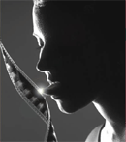
Technology in the Life World
CALL FOR PAPERS, PERFORMANCES, & INSTALLATIONS
INTERACTIVE FUTURES is a forum for showing recent tendencies in new media art as well as a conference for exploring issues related to technology. The theme of this year's event is Technology in the Life World. With digital media becoming more mobile, many artists and theorists are exploring ideas of nomadism and telepresence. Nomadic computing, mobile devices used to augment reality, and more publicly distributed technologies, are being considered by artists and theorists for their ethical and social impact.
Technology in the Life World will be presented in two streams: Digital Nomadism and Technology and Ethics. Artists working in new media are encouraged to submit proposals for installations, performances, and screenings. In their proposals, artists should relate their work to one of the above themes. All art work will be presented at Open Space artist-run centre. Installations should be compact and self-contained. Please see the list of technologies available toward the end of this document before applying.
Victoria Independent Film and Video Festival
Co-sponsored by Open Space Artist-Run Centre
Conference hotel - Laurel Point Inn
Victoria, British Columbia, Canada
February 4-6, 2005.
Scholars and artists working in new media arts, theory, and criticism are encouraged to submit proposals for presentations at the conference. Presentations should be, in part, demonstrative, incorporating digital technologies, interactive or digital video, sound, or network-based elements. In their proposals, presenters should relate their work to one of the above themes. We encourage proposals that push the boundaries of the traditional conference paper. Most presentations will take place at the Laurel Point Inn.
INTERACTIVE FUTURES is part of the Independent Film and Video Festival and applicants are encouraged to check the Festival website for more information on the broader program.
CONFIRMED SPEAKERS / ARTISTS
• Arthur and Marilouise Kroker are internationally known writers and lecturers on the future of technology. Arthur Kroker, Canada Research Chair at the University of Victoria, is the author of numerous book on technology and postmodernism as well as Director of UVic's Pacific Centre for Technology and Culture. Marilouise Kroker is Senior Research Scholar at the University of Victoria as well as co-editor of a trilogy of books on feminism and technology. Together, the Krokers edit the electronic journal, CTheory (www.ctheory.net) and co-curate CTheory Multimedia.
• Char Davies has achieved international recognition for her work in virtual reality. Integrating real-time stereoscopic 3-D computer graphics, 3-D localized sound and user interaction based on breath & balance, the immersive environments Osmose (1995) and Ephémère (1998) are world-renowned for their artistic sensibility, technical innovation, and powerful effect on participants. Davies has dealt with the themes of nature, psyche, and perception in her work for more than 25 years. Davies was a founding director of Softimage, building it into the world's leading developer of 3-D animation software, used for special effects in many Hollywood films including Jurassic Park and The Matrix. She left Softimage at the end of 1997 to found her own art & technology research company, Immersence Inc.
SUBMISSION GUIDELINES
INTERACTIVE FUTURES is interested in artistic and theoretical work that relates to role of new media technologies in the life world.
• Areas of exploration include: nomadism, mobility, augmented reality, telepresence, bio-technology, ecology, and ethics.
• Presentations can be in the form of DVDs, video tapes, games, web-sites, etc.. and should be 45-minutes in length.
• Proposed artwork for exhibition may take the form of installations, performances, or screenings.
• Applications should not exceed 500 words and should indicate whether a presentation or an art piece is being proposed. Please include a 200 max. word bio.
• If your presentation requires specific technologies please describe your needs in detail.
Proposals should be submitted electronically to:
Digital Nomadism
Julie Andreyev
Technology and Ethics
Steve Gibson
All proposals *must* be submitted in text only format either as an attachment or within the body of the email message. Please present examples of your work as a URL to a web-site.
FUNDING
INTERACTIVE FUTURES does not have funding for travel or accommodation. Presenters and artists are expected to apply for travel funding from their home institutions and/or granting bodies. Presenters and artists will be given a pass to all INTERACTIVE FUTURES events and will have access to the “Hospitality Suite” at the Festival hotel (food and drinks). All presenters and artists will be eligible for the conference rate at Festival Hotels (between $40-90 Canadian per night).
DEADLINE FOR ALL PROPOSALS: Friday, December 3, 2004.
Notification of acceptance of proposals will be sent out by December 17, 2004.
EQUIPMENT ACCESS
Laurel Point Inn – Presentations
The following equipment will be made available for all presenters:
• Mac computer with Monitor, keyboard, DVD/CD-ROM drive.
• Data/Video Projector.
• VHS Player.
• Sound system with amp and two speakers.
• Wireless high-speed internet access with DHCP.
Open Space – Art pieces
The following equipment is available for artists at Open Space. Artists should be aware that equipment will have to shared and therefore should not propose to use all of the below devices simultaneously. Art pieces should be easy to set-up and take down. Wherever possible artists should apply their own technology.
• 2 Data/Video Projectors.
• VHS Player.
• DVD Player.
• 3-4 Macintosh computers.
• Sound system with amp, 16-channel mixing board, mics, and four speakers. Eight speakers may be possible by special arrangement.
• Internet connection (shaw.ca).
INTERACTIVE FUTURES Co-Curators:
Steve Gibson sgibson @ finearts.uvic.ca
Julie Andreyev lic @ telus.net
festival @ vifvf.com
Posted by jo at 10:56 AM | Comments (0) | TrackBack
November 07, 2004
DTPA 2005
Digital Technologies and Performance Arts (DTPA 2005)
Second International Conference for Digital Technologies and Performance Arts (DTPA 2005); SCHOOL OF INTERMEDIA AND PERFORMANCE ARTS, Doncaster College, Doncaster, England; July 5-6, 2005. CALL FOR PROPOSALS; Deadline: January 5, 2005.
This interdisciplinary conference provides a forum for those in the fields of theatre, dance, music and performance (researchers, practitioners, educators, systems developers) for a dynamic and exciting exchange of approaches surrounding the use of new media technologies in live performance. Proposals are invited for papers, performances, presentations, workshops and poster presentations on the following topics:
• Live performance and interactive systems
• Motion capture/motion-sensing technologies
• Performance pedagogy, education and new media
• HCI and live performance
• Web-based performance and virtual performance spaces
• Realtime music control
• Gesture and interactive multimedia
• Interdisciplinarity and new media
• Performance software/hardware development
All proposals should be approximately 200-300 words. Proposals for performances and installations should be submitted with an outline, CD or DVD support, as well as full details of technical and spatial requirements. Workshop proposals should also include information on technical and spatial requirements.
All expressions of interest should be forwarded by January 5, 2005 to:
Dr. Dave Collins
Reader
School of Intermedia and Performance Arts
Doncaster College
High Melton
Doncaster
DN5 7SZ
Email: david.collins @ don.ac.uk
Notification of acceptance will be sent out by the end of March 2005.
Performing arts companies and independent artists may have conference fees waived but will be responsible for travel and accommodation fees.
Presenters may also wish to submit written papers for publication prior to or following the conference to the new International Journal of Digital Media and Performance Arts. http://www.intellectbooks.com/journals/padm.htm
Full registration information will be available shortly on the School for Intermedia and Performance Arts web-site.
david.collins @ don.ac.uk
Posted by jo at 02:16 PM | Comments (0) | TrackBack
October 20, 2004
Public Displays of Affection
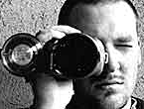
Affect and its Exhibition in Public
Public Displays of Affection
An Interdisciplinary Graduate Student Conference
Visual and Cultural Studies Program
University of Rochester
Friday, April 8 & Saturday, April 9, 2005
CALL FOR PROPOSALS
Civility can be viewed as a series of performances that generate a range of emotions, including the patriotism of war, the joys of shopping, and the fear of urban crime. The public display of affection constitutes a contest of meaning in which various appeals are made to organize the emotional life of the individual and the rules of decorum. To be convinced of this idea one only has to turn on the television. From the not-so carefully scripted emotions of the recent Presidential debates, to the ongoing pageantry of heteronormative romance, to the proscribed images of mourning for war casualties, it appears that the politics of putting your heart into the public sphere are by no means certain, but certainly meaningful.
PUBLIC DISPLAYS OF AFFECTION aims to explore the value of affect and its exhibition in public. Disturbed by formations of the public sphere as a wholly rational space for the exchange of collective ideas and actions, we turn instead towards the multiple meanings or uses of public feelings. We are interested in the specificity or uniqueness of emotions and how they shape historical moments and geographic sites.
We invite proposals from across disciplines, research interests and theoretical persuasions that engage with P.D.A. through specific forms of display: museums, galleries, mass media, film, theatres, festivals, etc. Possible areas of inquiry might include, but are not limited to:
Nationalism and/or spectacular nations
Political protest
Public/private space
Public sex
Marriage
Family
Feminism
Queer history and theory
Empathy, sentiment, depression, rage and other kinds of affect
***DEADLINE for submissions: December 15, 2004***
Submissions for 20-minute papers should be in abstract form (250-500 words). A self-addressed stamped envelope must accompany all submissions requiring return. Please include e-mail addresses with all submissions whenever possible.
Abstracts and inquiries may be sent via e-mail to: vcsconf @ mail.rochester.edu
Printed submissions should be sent to:
Organizing Committee for "Public Displays of Affection"
c/o Program in Visual and Cultural Studies
424 Morey Hall
University of Rochester
Box 270456
Rochester, NY 14627-0456
ABOUT THE PROGRAM
The Program in Visual and Cultural Studies is an interdisciplinary graduate program at the University of Rochester. Its focus is visual culture and critical theory; the Departments and Programs of Art and Art History, English, Film Studies, Anthropology, History, and Modern Languages and Cultures, as well as the Susan B. Anthony Institute for Women and Gender Studies, constitute its academic base. Web site: http://www.rochester.edu/college/AAH/
Posted by jo at 02:39 PM | Comments (0) | TrackBack
October 04, 2004
Distributed Form: Network Practice
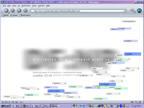
Dominant Spatial Paradigm
Distributed Form: Network Practice, University of California, Berkeley, October 22-24, 2004
"Recent developments in information technology have resulted in the entrenchment of networks and distributed systems as the dominant spatial paradigm, effectively challenging fundamental design issues of autonomy, originality, place, practice and form, which reconfigure disciplines through the implementation of distributed logics and collaborative 'open' practices. As a benchmark, this conference will analyze how the disciplines of art, science and architecture are responding to rapidly changing mobile, wireless, and information-embedded environments.
The conference will be organized around a multidisciplinary framework operating at three different scalar levels: At the Meta level, the conference will first address Form and the Network, raising issues of architectural morphology of and within networked society, by building a provisional history of networked design processes and production.
The second session, Form and Technology, will consider current research on the relationship between experimental digital technologies and emergent form.
The third panel, Micro: Form and Operation, will address theories of operative design strategies, social relationships and bodiless form.
The fourth panel, Mega: Form and Presence, will investigate how larger scale networks and their reconfiguration of time and space are altering professional design practices, while critically considering a logic of connection as the primary site of design."
Posted by jo at 06:22 PM | Comments (0) | TrackBack
October 01, 2004
PERVASIVE AND LOCATIVE ARTS NETWORK (PLAN)
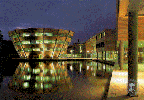
THIS IS THE (PLAN)
A new international and interdisciplinary research network in pervasive media and locative media has been funded as part of the Engineering and Physical Sciences Research Council (EPSRC) Culture & Creativity programme. The network will bring together practicing artists, technology developers and ethnographers with the aim of advancing interdisciplinary understanding and building consortia for future collaborative projects.
The network will stage three major gatherings. Each gathering will have a distinct form and focus: an initial workshop to launch the network and assess the state of the art; a technology summer camp for artists and technologists, including hands-on prototyping sessions using the facilities at Nottingham's Mixed Reality Laboratory; and a major public conference and participatory exhibition as a central component of the Futuresonic 2006 festival in Manchester; as well as a supporting web site and other resources.
CALL FOR PROPOSALS - PLAN Workshop
Submissions are invited to the first of these events, a two day public workshop with papers, demos and discussion sessions. The aim of the event is to launch the network, review the state of the art, bring key players in the field together, and make initial contacts. The event will also aim to identify a range of specific interests that can lead to the formation of sub-groups within the network. Position papers and a summary report will subsequently be published on the network web site.
The workshop will take place in London over two days in the week beginning 24th January 2005. Venue and final dates announced soon.
Please send submissions to ben@open-plan.org by Monday 8th November.
We request that participants seek support for travel and subsistence from their institutions. For participants without institutional affiliation the network shall support applications to funding councils and foundations, please contact us for further details.
THE NETWORK
Pervasive and Locative Arts Network (PLAN) - Enhancing Mobile and Wireless Technologies for Culture and Creativity
This network will draw together computer scientists and engineers who are leading the field in developing pervasive and locative technologies; artists who are using these technologies to create and publicly deploy innovative and provocative experiences; social scientists with a proven track record of studying interactive installations and performances; industrial partners from the creative industries, spanning the arts, television, games, education, heritage, mobile computing and telecommunications sectors; and international partners who are coordinating parallel networks around the world.
NETWORK OBJECTIVES
The network aims to support the formation of a new interdisciplinary research community to investigate how the convergent fields of pervasive media and locative media need to evolve in order to support future cultural and creative activities. Specific network objectives are:
-To review the scope of the research that is currently being carried out in
these fields through a focused workshop, leading to an integrated state-of-the art survey paper.
-To identify the key research issues that need to be addressed in order to further develop pervasive and locative media to support culture and creativity, leading to a series of discussion white papers.
-To seed future projects by bringing artists, scientists and industry together in a creative environment so that they can generate and practically explore new ideas, and also to provide a forum for publicly demonstrating some of these.
-To produce online and offline resources to support researchers, artists, industry and to promote public understanding of this emerging field, including a public website, an online document repository for members and a newsletter and DVD.
NETWORK ACTIVITIES
The network will organise and support a range of activities aimed at growing a research community and generating new collaborative projects between artists and technologists. These will include staging three major research gatherings, producing online and offline resources for fellow researchers and PhD students, and outreach activities targeted at industry.
Gatherings
We will stage three major gatherings. Each gathering will have a distinct form and focus: an initial workshop to launch the network and assess the state of the art; a technology summer camp for artists and technologist, especially PhD students, including hands-on prototyping sessions using the facilities at Nottingham's Mixed Reality Laboratory; and a major public conference and participatory exhibition as a central component of the Futuresonic 2006 festival in Manchester. These major gatherings will be interspersed with more ad-hoc steering and reflection meetings as required by the network participants.
Producing resources
We will produce resources to publicise the network, encourage the exchange of perspectives and discussion, and to provide tutorial support for PhD students, artists and other researchers who wish to break into this area. These will include:
-Online resources: a public website providing access to network information including project deliverables as well as news of forthcoming calls for proposals and conferences, supported by a online document repository where members can upload documents and take part in discussion. The latter will be realised using BSCW or Project Place software.
-Offline resources: a six monthly printed newsletter and a DVD of video
Outreach
The network will reach out to other researchers beyond the initial partners and also to the creative industries. This will include distribution of the newsletter and also staging a series of industry seminars, for example as part of the TI/EPSRC Outreach programme. The network research associate will also carry out a series of site visits to different partners and potential partners in order to learn more about and report on ongoing activities.
BACKGROUND IN SCIENCE AND CULTURE
A new generation of pervasive technologies is enabling people to break away from traditional desktop PCs and games consoles and experience interactive media that are directly embedded into the world around them. And locative media, the combination of mobile devices with locative technologies, supports experiences and social interaction that respond to a participant's physical location and context. Together these convergent fields raise possibilities for new cultural experiences in areas as diverse as performance, installations, games, tourism, heritage, marketing and education.
A community of researchers working in pervasive media, also known as ubiquitous computing, are exploring location awareness as a requirement for the delivery of accurate contextual information. Another community, primarily consisting of informal networks of technical innovators and cultural producers, which identifies its field as Locative Media, is exploring developments in and applications of locative technologies within social and creative contexts. One of the aims of this network is to bring these two communities together, linking academic research initiatives and agendas to key figures and ground breaking developments that are currently taking place outside mainstream academia.
The creative industries are also beginning to take up these opportunities, led by artists who are actively charting out the potentials and boundaries of the new pervasive and locative media. Other cultural sectors have also been exploring the potential of pervasive and locative media including the games industry through commercial examples of locative games played on mobile phones such as Bot Fighters and Battle Machine and also research projects such as ARQuake, Mindwarping, Pirates! and Border Guards. Researchers have also demonstrated applications in heritage and tourism, for example personal tourist guides and outdoors augmented reality displays and as well as in mobile learning experiences and participatory local history mapping projects.
A key characteristic of this research is its interdisciplinary nature, with many of these projects combining practicing artists, technology developers and also ethnographers, whose studies of early experiences that are actually delivered as public artworks have yielded new insights into the ways in which participants experience pervasive media, for example how they (and performers and technical crew) deal with uncertainty of location and connection, and, conversely, new metaphors for engaging in locative media.
However, realising the full potential of pervasive and locative media requires several further developments. First, it is necessary to expand the research community, drawing in new academic partners and also a greater range of partners from the creative industries. Second, it is important to deepen the interdisciplinary relationships between artists, technology developers and social scientists working within and between these two convergent fields. This is not only a matter of reflecting on this relationship, it is also necessary to pursue it in practice, which means forming new collaborations leading to practical projects. Third, we need to clarify and deepen the research agenda for this area, by opening up a variety of research questions, including:
-To what extent does the convergence of pervasive media and locative media signify a commonality of views, definitions and issues in each field?
-What new kinds of cultural applications will become possible through pervasive and locative media? Can we envisage new installations, performances, games and other public experiences?
-Can common design frameworks and tactics help create powerful user experiences? Can we identify and share design guidelines and generate useful abstractions, for example building on recent proposals for deliberately exploiting uncertainty and ambiguity
-What tools are required by creative users, for example that enable them to easily (re)configure an experience to work in different locations or to orchestrate it from behind the scenes. What new research challenges do these embody, for example, how do we visualise the state of the technical infrastructure-networks and sensors-96 or intervene in participants' experiences?
-What methods do researchers use to design and evaluate their experiences? We already see the use of ethnographic studies, audience discussions and even analysis of system logs; how should these be extended and can we share approaches, tools and even datasets to enhance our understanding of experience and design?
These questions, combined with the need to build a broader inter-disciplinary research community, provide the underlying motivations for this network.
INITIAL NETWORK
Project investigators:
Steve Benford, Nottingham (Principle Investigator)
Drew Hemment, Salford
Henk Muller, Bristol
Matthew Chalmers, Glasgow
Michael Sharples, Birmingham
Geraldine Fitzpatrick, Sussex
Christian Heath, Kings College
Jon Hindmarsh, Kings College
Network co-ordinator:
Ben Russell, Headmap/Locative Media Lab
Initial partners:
Marc Tuters, Locative Media Lab
Dennis Del Favero, NSW iCinema
Steve Sayers, NESTA
Toby Barnes, EM Media
Richard Hull, HP Labs
Denny Plowman, City of Nottingham Council
Sara Diamond, Banff Centre
Andrew Caleya Chetty, Metapod
Amanda Oldroyd, BT Exact
Matt Adams, Blast Theory
Nick Southgate, Ricochet TV
Annika Waern, iPerG
Giles Lane, Proboscis
Minna Tarkka, m-cult
Carsten Sorensen, LSE
Angharad Thomas, Salford
Chris Byrne, New Media Scotland
Paul Sermon, Salford
Nina Wakeford, INCITE, Surrey
Posted by jo at 08:20 AM | Comments (0) | TrackBack

